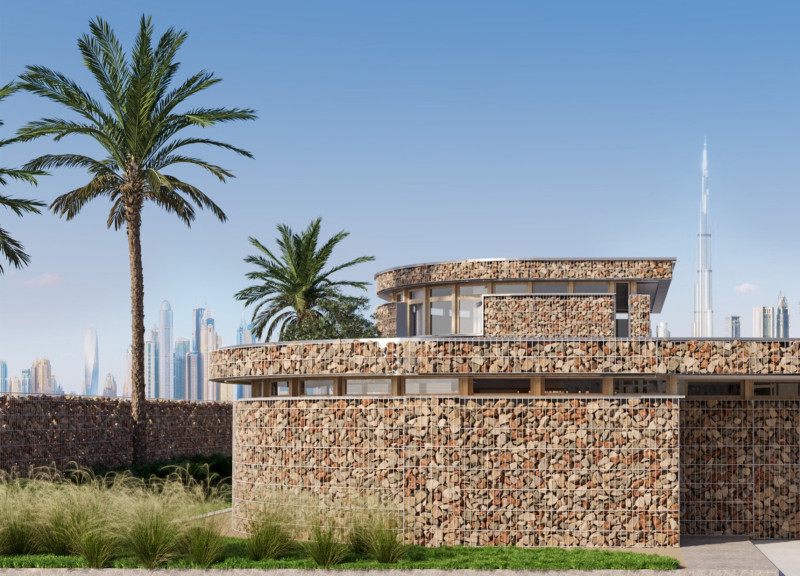5 key facts about this project
At its core, the project serves multiple functions, including residential, commercial, and communal spaces, each designed to cater to various aspects of daily life. The thoughtful arrangement of these spaces reflects a comprehensive understanding of user needs and urban dynamics. For instance, areas designated for social gathering encourage interaction among residents and visitors, promoting a sense of community while enhancing the overall user experience. The design emphasizes accessibility, ensuring that all areas are welcoming and usable for individuals of all ages and abilities.
Key elements of the project include its innovative use of materials and spatial organization. The façade displays a careful selection of concrete, glass, and wood, combining durability with aesthetic appeal. Large glass panels are strategically placed to allow for ample natural light, creating inviting interiors that connect occupants with their surroundings. The use of wood in various elements adds warmth and texture, establishing an inviting atmosphere. Furthermore, the form of the building is carefully articulated to respond to the site’s context, incorporating elements that respect the scale and character of neighboring structures.
Next, a hallmark of this architectural design is its commitment to sustainability. The project incorporates various green technologies, such as rainwater harvesting systems and energy-efficient HVAC systems, reflecting a dedication to minimizing environmental impact. Green roofs and terraces are integrated into the design, enhancing biodiversity and providing occupants with cultivated spaces for relaxation and community engagement. These design considerations not only address ecological concerns but also promote a lifestyle that values environmental stewardship.
The project also stands out for its community-centric approach. Thoughtful public spaces are interspersed throughout the design, inviting residents and non-residents alike to enjoy outdoor activities, art displays, or simply relax in landscaped areas. By integrating these communal spaces, the design fosters a sense of belonging and encourages social cohesion, aligning with contemporary trends in urban planning that prioritize interaction in shared environments.
In examining the architectural ideas behind this project, it is evident that the design goes beyond mere aesthetics; it is an embodiment of a vision for modern urban living. The careful consideration of space, function, and material culminates in a project that not only meets practical needs but also enhances the quality of life for its users.
This project exemplifies a forward-thinking approach to architecture, showcasing a balance of innovation and respect for the environment and community. The design outcomes reflect a commitment to creating spaces that are both functional and sustainable. As one delves deeper into the specifics of this architectural project, there are numerous layers of detail to explore, including comprehensive architectural plans, sections, and design sketches that illustrate the thoughtful process behind it. Interested readers are encouraged to review these elements to gain a fuller understanding of the project’s design intentions and architectural significance. Exploring the project presentation will provide valuable insights into how architecture can effectively respond to modern challenges while fostering community and sustainability.


























